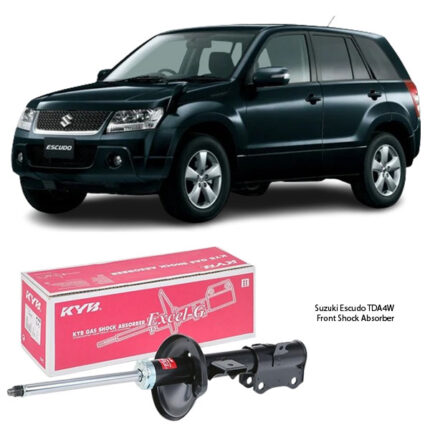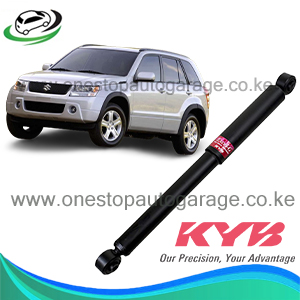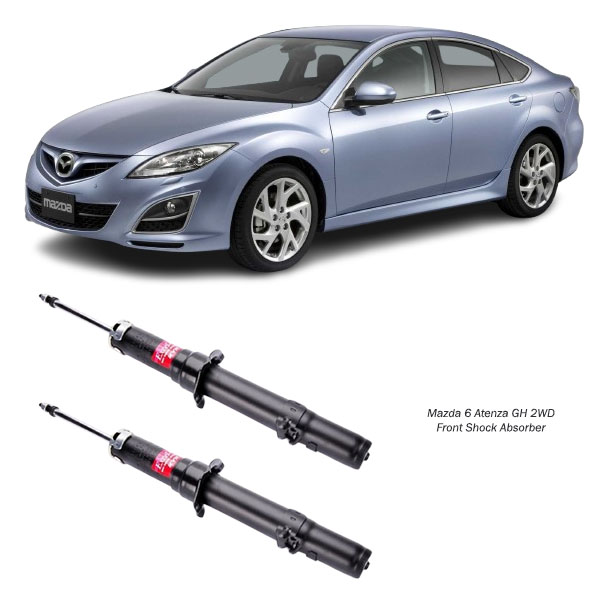-5%
Get Mazda 6 Atenza GH 2WD Front Shock Absorber Assy 341449 in Kenya
When you’re cruising down a bumpy road yet feel like you’re gliding on air, thank your Front Shock Absorber Assembly. This vital component of your suspension system does more than just provide comfort—it plays a major role in your vehicle’s safety, stability, and handling. Let’s explore everything you need to know about the front shock absorber assembly—what it does, why it matters, how it works, and how to spot when it needs attention. 👇
What is a Front Shock Absorber Assembly? 🛠️
The Front Shock Absorber Assembly, often simply referred to as the “front shock,” is a key part of your car’s suspension system. Located near the front wheels, its job is to absorb and dampen the impact of road irregularities—like potholes, speed bumps, or rough terrain—ensuring the vehicle stays stable and manageable.
A typical front shock absorber assembly includes:
-
Shock Absorber (or strut): The main component that dampens impact.
-
Coil Spring: Often integrated in modern vehicles to help support the vehicle’s weight and absorb road force.
-
Mounting Hardware: Bushings, mounts, and bolts that attach the assembly to the chassis and suspension.
Together, these components work to maintain control, comfort, and contact between the tires and the road. Without them, every little bump would be transferred straight to your steering wheel and your spine! 😬
What Does the Front Shock Absorber Do? ⚙️
The shock absorber has one main job: control the up-and-down motion of the wheels. When you hit a bump, the tire wants to bounce. Without shock absorbers, that bounce could continue uncontrolled, affecting how the car drives and feels.
Here’s how the shock absorber assembly functions:
-
Damping Road Shock: As the wheel hits a bump, the shock compresses and slows the movement.
-
Controlling Rebound: Once compressed, it helps the spring return to its normal position in a controlled manner.
-
Reducing Vehicle Body Roll: It prevents excessive leaning when turning.
-
Improving Tire Contact: It keeps your tires pressed to the road, which is essential for braking and steering.
In short, front shock absorbers are the guardians of comfort and control. 🛡️
Why the Front Matters Most 🧭
While rear shocks are also important, the front shock absorbers have a bigger impact on your steering and handling. That’s because:
-
The steering system is located in the front.
-
The engine’s weight usually sits over the front axle.
-
Braking force is often greater at the front wheels.
So, worn-out front shocks won’t just make your ride bumpier—they can make your car harder to steer, brake poorly, or even lose control during sharp turns or on wet roads. 🌀
Types of Front Shock Absorbers 🔩
There are different types of front shock absorbers depending on the vehicle and suspension setup:
1. Twin-Tube Shock Absorber
-
Common in most vehicles.
-
Consists of an inner tube (working chamber) and outer tube (reservoir).
-
More affordable and easier to manufacture.
2. Mono-Tube Shock Absorber
-
Has a single tube with a floating piston.
-
Offers better heat dissipation.
-
Preferred in high-performance and off-road vehicles.
3. Struts
-
Integrate shock absorber and coil spring into one unit.
-
Provide structural support to the suspension.
-
Common in modern front suspension systems.
Each type serves a similar purpose but offers different benefits depending on your driving style and vehicle type. ⚙️
Signs Your Front Shock Absorbers Need Attention ⚠️
Just like brake pads or oil filters, shock absorbers wear out over time. Their internal components—like seals and valves—degrade with use and exposure to road elements.
Here’s how you know it’s time to check or replace them:
🔹 1. Unusual Bouncing
After hitting a bump, if your vehicle keeps bouncing instead of settling quickly, the shocks may be failing.
🔹 2. Nose Diving While Braking
If the front of your car dips dramatically when you brake, the shocks aren’t absorbing the motion properly.
🔹 3. Uneven Tire Wear
Worn shocks can’t keep your tires properly planted on the road, leading to irregular tire wear.
🔹 4. Fluid Leaks
Shock absorbers are filled with hydraulic fluid. If you see oil leaking from the shock body, it’s likely damaged.
🔹 5. Poor Steering Response
Loose, unsteady steering or excessive body roll while turning are signs your front shocks may be worn.
🔹 6. Knocking or Clunking Sounds
Damaged shocks or worn-out mounts can produce noise when going over bumps.
If any of these symptoms sound familiar, it’s time for a suspension check-up. 🔧
The Replacement Process 🔄
Replacing front shock absorbers is a technical process best handled by professionals. It involves:
-
Lifting the vehicle.
-
Removing the wheel.
-
Disconnecting the shock from the steering knuckle and upper mounts.
-
Installing the new shock or strut assembly.
-
Reconnecting everything and performing a wheel alignment (if needed).
It’s recommended to replace shocks in pairs (both front left and right) to ensure balanced performance. 🔁
Benefits of Healthy Front Shocks 🌟
Replacing or maintaining your front shock absorber assemblies comes with real perks:
✅ Improved Comfort – Smooth ride across all terrain types.
✅ Better Handling – Sharper steering and cornering.
✅ Shorter Braking Distance – Safer stops in emergencies.
✅ Tire Longevity – Even tread wear and better road contact.
✅ Overall Safety – More predictable and stable driving.
Front shocks are about more than comfort—they directly affect your driving confidence and control. 🧠
How to Extend the Life of Your Front Shocks 🛡️
Here are some simple tips to keep your front shock absorbers in top condition:
🚫 Avoid potholes and rough roads when possible.
🏎️ Drive smoothly—aggressive driving accelerates wear.
🧼 Keep your undercarriage clean to prevent corrosion.
🛠️ Get regular suspension inspections (especially if you notice any symptoms).
🔄 Replace shocks around every 50,000–100,000 km, depending on your usage.
Conclusion: Front Shocks, Big Impact 🔧❤️
The Front Shock Absorber Assembly may not get the spotlight like your engine or brakes, but it’s a champion in delivering comfort, control, and confidence on the road. Whether you’re driving through city streets, hitting rough terrain, or cruising the highway, your front shocks are working behind the scenes to keep your journey safe and smooth.
So next time you feel a graceful glide over a speed bump, remember—it’s the shock absorbers quietly doing their job. 🙌
If you ever notice signs of wear, don’t delay. Replacing your front shock absorber assemblies in time ensures your vehicle performs the way it was meant to—and keeps you and your passengers safe mile after mile.
Follow us on Facebook for more parts.



